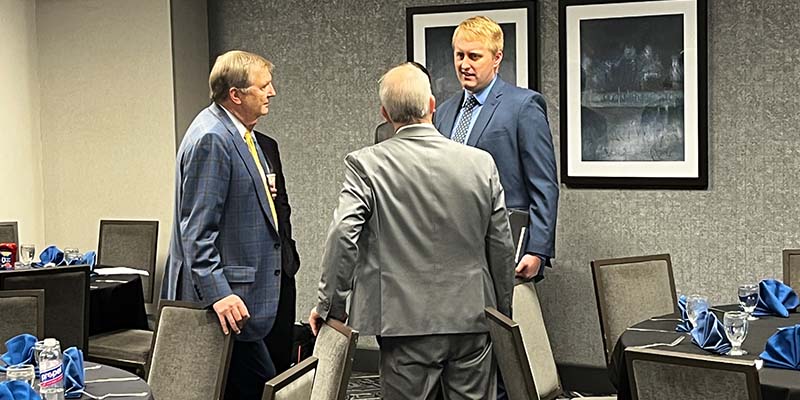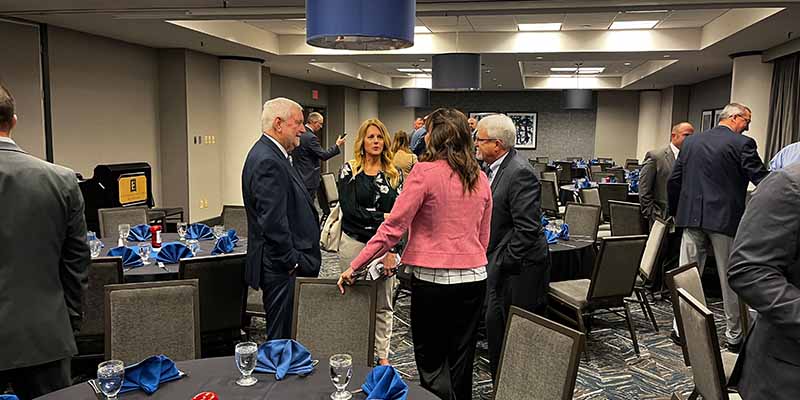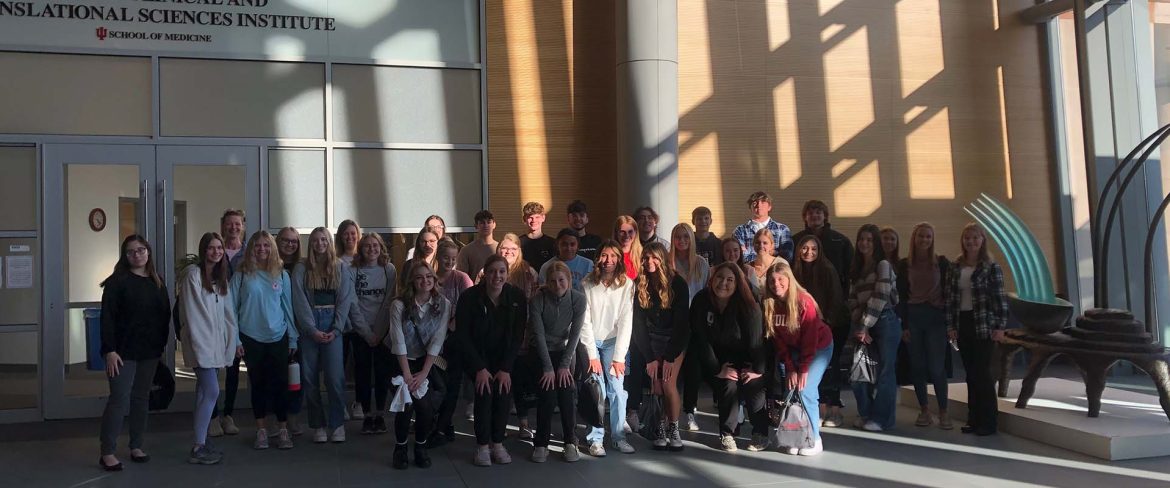One Strong Voice
How a one-man office, a statewide network, and national ties keep local districts heard in Indianapolis and Washington
When Christopher J. Logani describes the Indiana Small and Rural Schools Association, he starts with purpose. The association was created so that small town and rural districts would not be lost in the noise at the Statehouse. That purpose has never changed.
“From day one the mission has been advocacy that promotes the success of students, communities, and schools in rural and small towns,” says Logani, executive director since 2017.
“We take the positions our members vote for each year, and we push for local control and Home Rule so districts can serve their students well.”
From seed grant to steady presence
The association began with a grant from the Indiana Department of Education, launched by a group of like-minded districts that saw a gap in representation at the General Assembly. Over the years it has been guided by several executive directors, including Larry Johns and Scott Turney, who retired in 2015. Logani took the helm after serving on that leadership continuum and has kept the focus constant while expanding practical member value.
Membership spans about 170 school districts across the state. That diversity is by design. Rural in Indiana can mean a countywide system with thousands of students or a small town district with only a few hundred. It can even be a compact district inside a big city, such as Speedway or Beech Grove, that serves a small and distinct community.
“There is no one type of rural and no one type of small town school,” Logani notes. “We have districts with five thousand students and districts with four hundred and fifty. We represent their interests all the same.”

Egalitarian membership, equal representation
The association’s membership model is intentionally simple. There are no gold, silver, or premium tiers. District members receive the same services, and service members from business and industry can join as partners for four hundred dollars per year to introduce relevant solutions to schools. Everyone pays the same fee, and everyone receives equal representation.
“We do not sell levels. Everybody pays four hundred dollars, and everybody gets equal representation.”
Practical value every week
What does membership deliver beyond a policy voice:
- Dual membership with NREA. Enrollment includes membership in the National Rural Education Association, which brings steady federal updates and funding intelligence.
- Statehouse coverage. Members receive weekly emailed bulletins that summarize legislative shifts and program opportunities. A recent note highlighted a “Mini Medical School Day” with the IU School of Medicine, opening pathways exploration for rural students.
- Collective purchasing and cost curves. The association organizes group buys and special cost services, surfaces legal referrals to education-focused firms, and curates a shared file of cost-saving practices that members submit each week.
- On-demand research. When districts need clarity on complex topics, the association runs the numbers. Recent work has covered school consolidation scenarios, debt profiles, tax rates, and assessed value per student, tying analysis back to policy proposals so districts can brief their boards and legislators with confidence.
“We track policy at the Statehouse, track federal funding changes, and hunt for ways districts can save money and operate more efficiently,” Logani says. “Sometimes that is economics, sometimes that is statute, and often it is both.”
One person, many hats
The association’s staff list is short by choice. “There are three people, me, myself, and I,” Logani jokes. He reports to a board and runs the operation day to day, which keeps overhead low and responsiveness high. The structure puts dollars back into member value while relying on partners to extend reach where it matters most.
Partners that multiply impact
The association’s network includes Indiana Farm Bureau, which sits on the board and contributes data and analysis, and university partners such as Purdue University and Indiana Wesleyan University. Programming includes a spring conference and a new fall conference for teachers that are in planning. Collaborations with IU School of Medicine and the Rural Health Association aim to grow healthcare talent from rural communities for rural communities.
The challenge in front of every district: retaining teachers
If there is one issue that towers over the rest, it is teacher retention. Indiana is seeing more educators arrive through non-traditional pathways and alternative licensure. That brings opportunity and urgency.
“Nothing improves student performance more than well trained teachers,” Logani says. “Indiana has invested heavily in reading training, which works, but it is expensive. The challenge is how to sustain that across the curriculum, especially in secondary math, when budgets are tight.”
Compensation and benefits remain part of the equation. Policymakers have pushed to lift salaries and rein in healthcare costs. The association backs that direction and wants local leaders to have the tools to reward growth over time, not just entry-level pay.
“Retention means progress for the first, second, third, and fourth year teachers too. We need ways to reward development, not only starting salaries.”

Policy priorities, local tools
Because all funding follows the student in Indiana, districts have limited levers to raise revenue for salaries and retention. The association has advocated for allowing a local option income tax dedicated to teacher pay, a modest tool that would sit alongside referenda and operate with local consent.
Another priority is local control when the state allocates new dollars. Well-intended statewide minimums can create compression, concentrating raises among first-year teachers and leaving little room to recognize growth in years two through five. The association’s position is straightforward. Let districts negotiate and balance the needs of new and developing teachers while keeping an eye on long-term retention.
Building capacity where the jobs are
Looking ahead, the association is working with its board and partners on teacher training for Career and Technical Education. The plan is to align with industry standards and credentials, partner with Ivy Tech on pathways, and secure nonprofit funding to launch a train-the-trainer model. The goal is practical: give teachers the certifications they need to run high-value programs, and give students skills that match the regional labor market.

Communication that connects opportunities to classrooms
Members hear from the association through a reliable cadence of weekly emailed updates. The bulletins stitch together policy movement, grants, program invitations, and shared savings plays. The emphasis is on actionable information, quick reads, and links that help superintendents and principals move from awareness to sign-up without getting lost in the weeds.
What has not changed is the why. The association still exists to ensure rural and small town students in Indiana get the same attention, resources, and opportunity as their peers anywhere else in the state. It is a steady voice at the Statehouse and a practical ally in the inbox, backed by universities, Farm Bureau expertise, and a national rural education lens.
“We work every day to provide great value at a low cost, to help districts work smarter, not harder, and to give taxpayers the assurance that we are focused on outcomes,” Logani says. “That is how you honor communities.”
At A GLANCE:
Name: Indiana Small and Rural Schools Association
What: The voice and policy advocate for small and rural based schools and the many Indiana educational professionals that make up their membership
Where:
Website:

